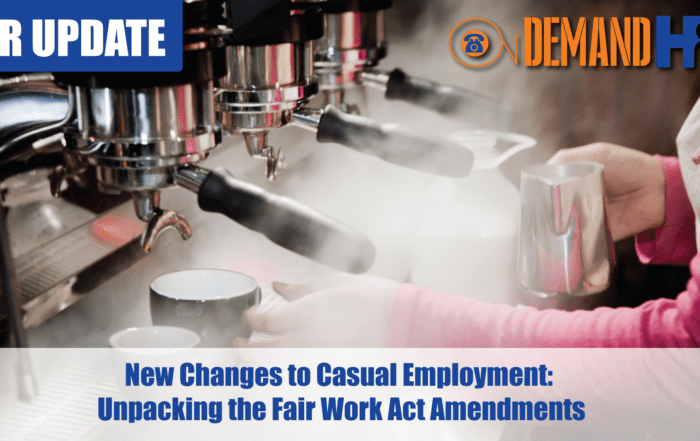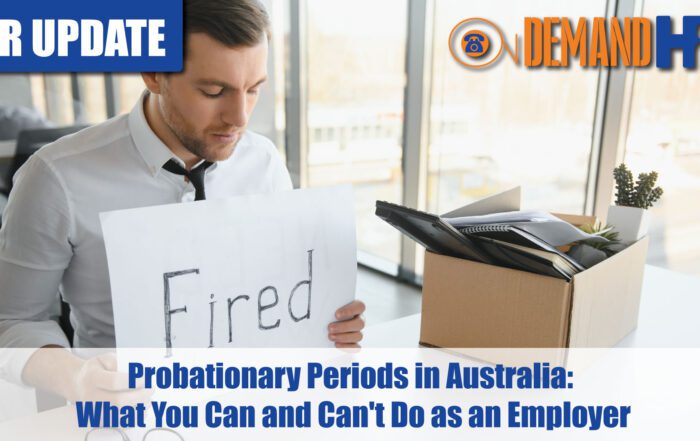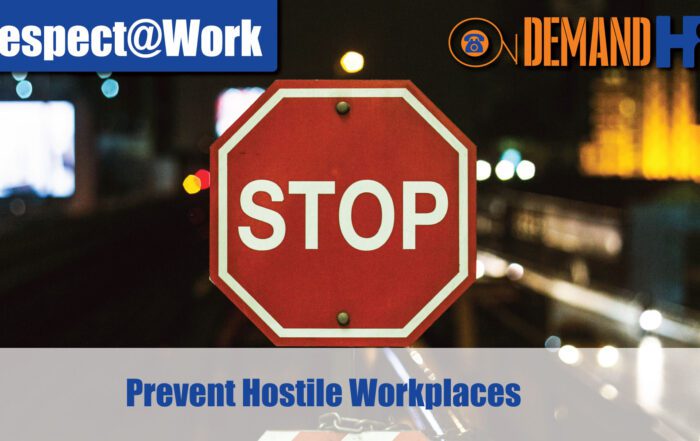Covid, Close Contact & Leave Entitlements
Happy new year from the entire On Demand HR team, and today we bring you the first essential update for 2022. As you will be aware, the transition to “living with Covid” has brought a significant increase in the number of positive cases. As some employees return to work, we are getting a lot of questions regarding Covid, isolation and the appropriate leave entitlements in this “new normal”.
Please see below for a full transcript of this video
Share the HR or workplace relations challenge facing your business and one of our experienced consultants will be in touch within 24 hours with a strategic action plan or discover the best strategy yourself by accessing out free online training library.
Transcript
Happy new year from the entire On Demand HR team, and today we bring you the first essential update for 2022. As you will be aware, the transition to “living with Covid” has brought a significant increase in the number of positive cases. As some employees return to work, we are getting a lot of questions regarding Covid, isolation and the appropriate leave entitlements in this “new normal”.
Most questions tend to fall into one of three scenarios, as follows:
Employee Positive Case
At the time of writing, if an employee returns a positive Covid test they are required to self isolate for 7 days, and then can return to normal duties providing that they are no longer symptomatic. Whilst it may be possible that the employee might be able to work from home for all or part of the isolation period, generally we are advising clients to approve personal leave subject to the employee providing suitable evidence. In most cases either evidence of a positive PCR test or provision of a medical certificate is suitable.
Many employees are currently on annual leave, however if they become sick during annual leave, they are entitled to change this to personal leave.
Employee Required To Isolate (“Close Contact”)
You may be aware that across most of the country, the definition of a “close contact” has changed. In general, an employee will only be considered a close contact, if a member of their immediate household is a confirmed case, and therefore will be required to self-isolate for 7 days.
In this scenario, as the employee themselves is not actually sick, they would not be entitled to access their personal leave. This leaves the option of working from home where possible, mutually agreed annual leave, or placing the employee on unpaid Pandemic Leave for their isolation period. In the case of Pandemic Leave, the employee may be eligible to claim a Disaster Payment which is currently $750 per 7 day period.
Employee Required To Care (for a positive case)
This scenario will apply for an employee who is required to provide care an immediate family member, or member of the same household. This scenario is a challenging one as often the employee will be unable to clearly demonstrate they are providing care and support, and as such each situation should be looked at on its merits.
In our view, the obligation rests with the employee to demonstrate they are providing care and support to another eligible person. It should not be assumed that just because a person has to isolate (with another household member), that they are providing care and support. We would also take the view that simply delivering food and supplies to another family member, would not be sufficient reason as this can be undertaken outside of business hours.
If you require any advice regarding Covid-19 and leave, please do not hesitate to reach out to us by visiting our website at ondemandhr.com.au
Looking forward to seeing you all in the next update






